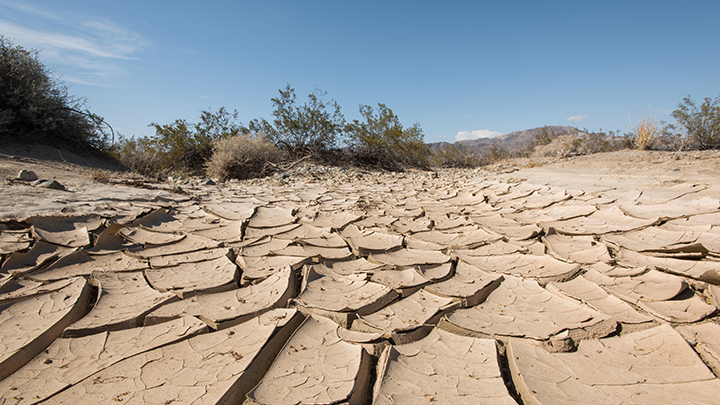The UB Water Research Institute warns that the current drought is the most severe in eastern Catalonia in two hundred years

News
|
Research
(28/02/2024)
The current drought in Catalonia has already beaten records. This is shown by the data gathered by Javier Martín Vide, professor at the Faculty of Geography and History of the University of Barcelona, and a member of the UB’s Water Research Institute (IdRa). Specifically, the drought affecting the internal basins in Catalonia — River Ter and River Llobregat, and others — is not equal to any other in a period of at least two-hundred years, when it comes to the precipitations gathered in the Barcelona area.

News
|
Research
28/02/2024
The current drought in Catalonia has already beaten records. This is shown by the data gathered by Javier Martín Vide, professor at the Faculty of Geography and History of the University of Barcelona, and a member of the UB’s Water Research Institute (IdRa). Specifically, the drought affecting the internal basins in Catalonia — River Ter and River Llobregat, and others — is not equal to any other in a period of at least two-hundred years, when it comes to the precipitations gathered in the Barcelona area.
“The fact that the last three years have been the driest years in the annual rainfall series at the Fabra Observatory of Barcelona, since 1914, has a very low probability of occurrence. This is an absolutely exceptional situation”, notes Martín Vide. The existing level of water in the nine reservoirs of the internal basins of Catalonia has fallen below 15% and this is the lowest percentage of reservoir water in Spain. The UB professor warns that “this is not only a rainfall and water drought but also an agricultural and ecological one, due to the negative effects on agriculture and the ecosystems. It is a socioeconomical one too, affecting most economic sectors”.
Javier Martín Vide has compared the rainfall of the three last years in Barcelona (2021-2023) with the series of annual accumulated precipitation anomalies in Barcelona, taken from the Meteorological Service of Catalonia. His conclusion is that at the beginning of the twenties of the nineteenth century, there were three consecutive years with an equal or major rainfall anomaly to the one recorded in the last three years. It can therefore be said that eastern Catalonia is now facing the worst drought in the last two-hundred years.
The professor also analysed the complete annual rainfall series of the Barcelona Fabra Observatory (914-2023), which belongs to the Royal Academy of Arts and Sciences of Barcelona. Data show that the three years with the lowest level of water of this series (110 years) are 2021, 2022 and 2023, with an average of over 50%.
Regarding the future, Martín Vide says that seasonal predictions of rainfall and temperature do not show, from now until after spring, any clear abnormal rainfall, while the average temperature will continue to be higher than expected at this time of the year.
Javier Martín Vide has compared the rainfall of the three last years in Barcelona (2021-2023) with the series of annual accumulated precipitation anomalies in Barcelona, taken from the Meteorological Service of Catalonia. His conclusion is that at the beginning of the twenties of the nineteenth century, there were three consecutive years with an equal or major rainfall anomaly to the one recorded in the last three years. It can therefore be said that eastern Catalonia is now facing the worst drought in the last two-hundred years.
The professor also analysed the complete annual rainfall series of the Barcelona Fabra Observatory (914-2023), which belongs to the Royal Academy of Arts and Sciences of Barcelona. Data show that the three years with the lowest level of water of this series (110 years) are 2021, 2022 and 2023, with an average of over 50%.
Regarding the future, Martín Vide says that seasonal predictions of rainfall and temperature do not show, from now until after spring, any clear abnormal rainfall, while the average temperature will continue to be higher than expected at this time of the year.
Multimedia gallery

